The Guardian covered Tehran in its recent article series, “The next 15 mega cities,” an examination of metropolises across Asia and Africa that will soon hit the 15-million population mark. Unfortunately, instead of taking the opportunity to provide in-depth coverage of a widely misunderstood metropolis, the article peddles in tired cliches. The author – Oliver Wainwright, an architect critic whose biography suggests little background in Iran – highlights disfunction, ignoring the hard work done by many on the ground to improve urban life and build a more sustainable, beautiful, and pedestrian-friendly city. Instead of examining the ins-and-outs of daily life or the resilience of residents, the article sensationalizes the role of Islam in public life. It stresses negative features like traffic and pollution while ignoring positives like innovative approaches to public space, a thriving art and culture scene, and community-led projects.
In doing so, the article recycles tropes that reduce metropolises across the Global South to the same stereotypical image: unruly and always on the brink of disaster. In an age where portrayals of the Middle East are so often mired in reductionist, Orientalist cliches, journalists have a responsibility to dig beneath the surface. It’s easy to write about what’s wrong; it’s harder to find the stories of those who succeed in the face of adversity. But those are the stories worth telling.
Tehran over the last 30 years has undergone a remarkable and exciting urban transformation, with city officials, cultural venues, and grassroots organizations helping build a city that defies cliches. In this article, I offer a rebuttal to how Tehran was portrayed, discussing what was said and highlighting what was left unsaid in order to offer a sense of the complexity of Tehran’s urban life and modern history.
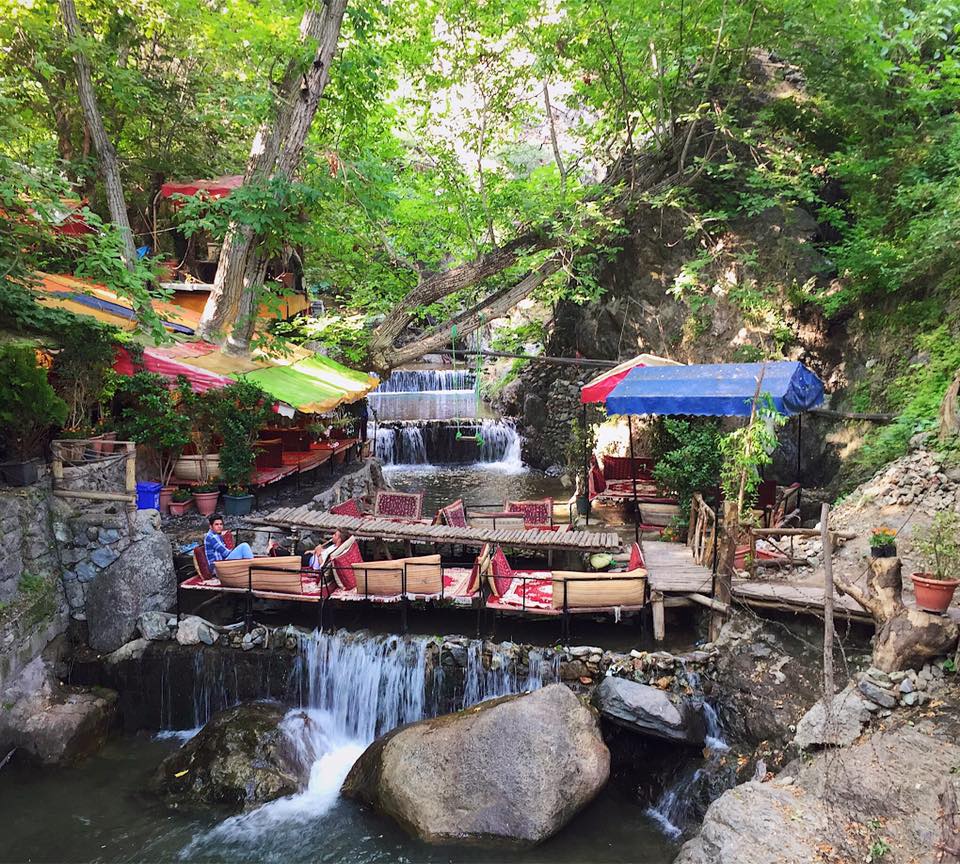
Greening “concrete” Tehran
The Tehran article begins by likening this metropolis of 8 million people – 14 million if you count the suburbs – to “LA with minarets.” This is the first sign that something is wrong. The photo accompanying the article – depicting a maze of high-rise of towers clustered against north Tehran’s mountains – looks nothing like spread out, low density Los Angeles- and there is not a minaret in sight! As someone who grew up in Los Angeles, lived in Tehran, and studied its urban history, I can attest that there is almost nothing similar about the two cities, beside traffic, some mountains in the distance, and the presence of Iranians in both (hence LA’s “Tehrangeles” moniker).
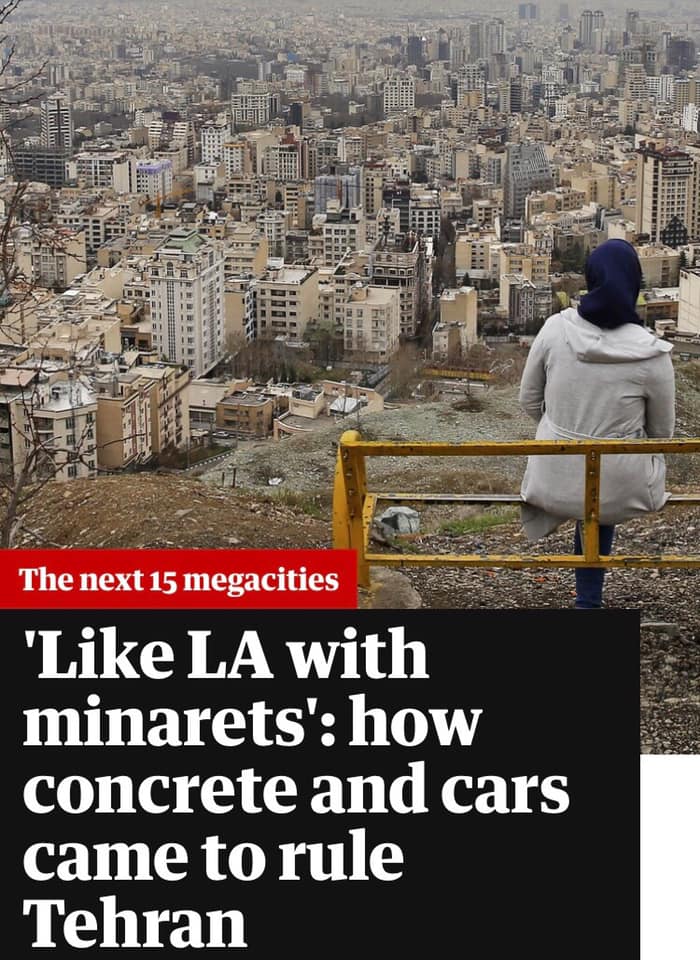
The article’s author bases the comparison on the fact that Tehran’s first urban plan was designed by Victor Gruen, an LA-based architect credited for inventing the modern shopping mall who is considered partly responsible for the suburban sprawl that defines US cities. The 1966 Tehran urban plan provided the basis for Tehran’s highway network, including sections built both before and after the 1979 Revolution. But this urban plan was otherwise – and quite fortunately – barely implemented. This was a positive feature of the unregulated growth and ad hoc development that characterized the decade after Iran’s 1979 revolution, saving the city from many of the mega projects that scarred other metropolises around the world.
Tehran has a pedestrian-friendly scale, design, and extensive public transportation system that puts Los Angeles to shame. While Los Angeles gutted its central neighborhoods to make way for highways, Tehran’s highways completely avoid the city center, ensuring the historic fabric was left untouched. Wide sidewalks grace all of Tehran’s major streets, highways are relatively small and have frequent pedestrian overpasses, and the scale and density of the city makes it easy to get around with public transportation. This is not by accident; over the last 30 years, Tehran’s municipal government has massively expanded pedestrian infrastructure, investing large sums to make the city more livable.
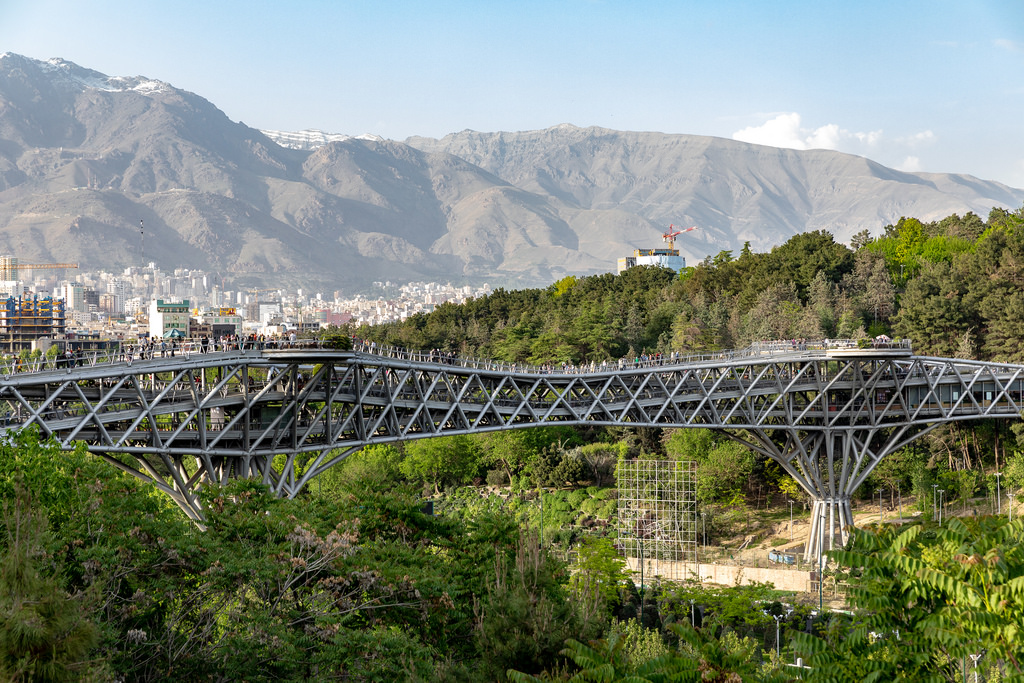
While Wainwright highlights the failings of former Mayor Ghalibaf to improve urban life, he says nothing about his predecessor Mayor Karbaschi, who succeeded dramatically in his mission to make Tehran a more human-centered city. Karbaschi took power in 1989, and his greatest achievement was to take hundreds of unused spaces across the capital and convert them into “pocket parks,” accessible, family-friendly spaces wedged in every nook and cranny. Between 1989-1995, the number of parks in Tehran increased from 184 to 680, and green space per capita went from 2 to 11 square meters despite a rapidly rising population. Parks were often outfitted with public institutions like libraries, cultural centers, and sport complexes and 55% were located in the poorer, southern half of the city. 65% of the users of these public spaces are women. In just a few years, Karbaschi greened a concrete mess left by the Shah and the disorder that followed his overthrow.
Ghalibaf continued this expansion of green public space, introducing large new public parks, museum complexes, and sporting areas. He also oversaw a reduction in pollution in the capital, which soared following the implementation of expansive US sanctions in 2010, which crippled Iran’s economy, led to medicine shortages, and banned Iran’s imports of refined gasoline leading directly to a toxic pollution crisis. Under Ghalibaf, policies were introduced like congestion pricing that limited car usage in the city center, a bikesharing program, and billboards that indicate daily pollution levels to alert residents. During this time, Iran became a global leader in cleaner natural gas fuel. Instead of discussing these policies, Wainwright cites a fatwa by Iran’s supreme leader telling Iranians not to drive in heavy pollution. By focusing on a fatwa, Wainwright reinforces the tired and cliched idea that Iranian governance is based on religious diktat – and not the variety of municipal policies that Wainwright overlooks.
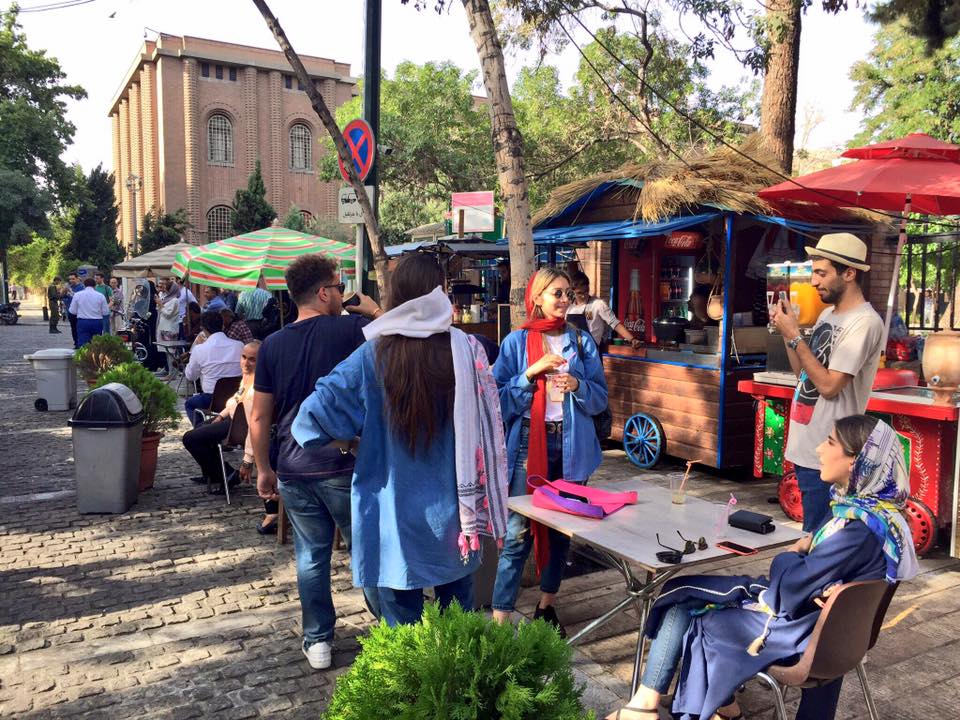
One of the most successful projects in Tehran over the past 20 years is its subway system, the largest in the Middle East. With 173 kilometers of track and 4-5 million riders per day, Tehran’s subway is among the world’s busiest. Subways are clean, well maintained, and cheap – about a few cents a ticket – because they’re government subsidized. Stations are graced by public art and shopping arcades, and they provide countless jobs for salespeople who hawk everything from pens to bras to books in subway cars.
Where the subway doesn’t reach, Bus Rapid Transit (BRT) lines go. BRT are dedicated lanes allowing buses – and commuters who opt for public transit over cars – to speed through traffic. Much cheaper than subways, they allow the city to build far more at less cost. With around 2 million daily riders, the BRT has transformed accessibility in Tehran. And efforts continue: expanding public transportation and improving accessibility across the city was a major issue in Tehran’s recent municipal elections.
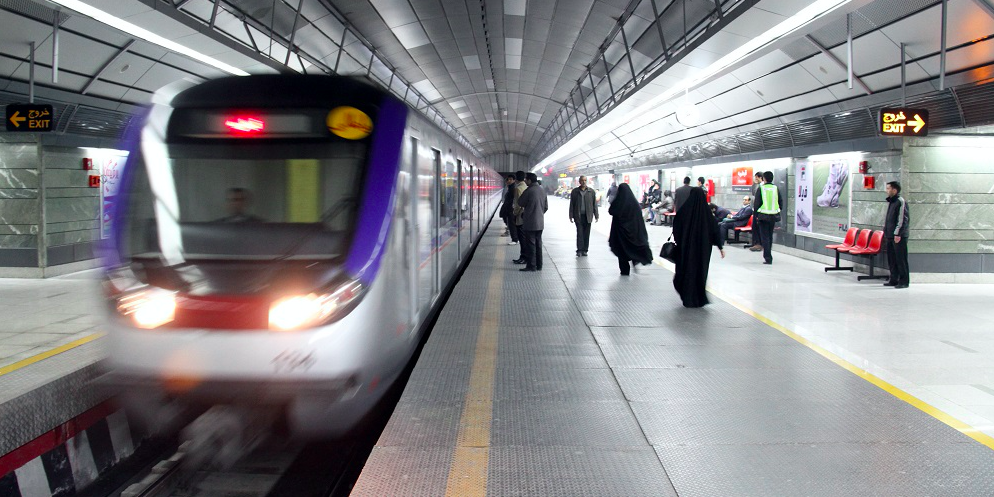
Toward a more livable and artistic city
Wainwright begins his piece by discussing dor-dor, an expression that refers to when young Iranians cruise around in cars at night, flirting with people in passing cars, and handing out their numbers. This is followed by several paragraphs about the morality police, whose main job is to uphold “public morals,” particularly regarding women’s clothing. As Wainwright notes, the last few years has seen a relaxing in such restrictions: the president has openly criticized the morality police and Tehran’s chief police has suggested that those breaking clothing codes will no longer face arrest. But the morality police remains a major problem, and there have been many cases of citizens resisting arrest.

The author’s focus on dor-dor misses the massive expansion of cultural and social venues in recent years across Tehran in recent years, undisturbed by morality police and often subsidized with public funds. The explosion in cafes, theaters, public libraries, and cultural centers have dramatically transformed public space. Museums have popped up everywhere, including one to Monir Farmanfarmaian, one of the country’s most celebrated modernist artists. New bookshops are everywhere, filled wall to wall with the latest books from abroad and the thriving Iranian publishing industry. This boom was made possible in large part due to government tax exemptions for cultural institutions, allowing bookshops to occupy prime locations in an expensive real estate market. Even as bookshops close around the world, in Tehran, they are blossoming on every corner.
The same week that the article was published, dozens of art galleries hosted Tehran Teer Art Week, bringing hundreds together in dozens of shows, panels, and performances to debate art, politics, and urban life. The week’s theme was “art and the city,” and reclaiming the city was a hot topic. Shows took place in public spaces and performers invited passerby to join in. This reflects growing interest in the concept of urban citizenship – the idea that residents of the city have a right to its space, and that privatization of public space must be fought.
This is shown by the growth of activist groups in Tehran that fight for the “right to the city.” Among these are a group called Shahr-e Digar – meaning “Another City” – which has fought gentrification efforts by defending tenants’ rights in neighborhoods under threat of development, as well as Bahamestan – meaning “Together-stan” – which advocated for the rights of the physically handicapped and successfully pushed the municipality to expand accessibility. There are also groups like Urban Art House bringing art into the streets. These groups oppose the privatization and gentrification of public space, refusing to allow Tehran to become a city for the rich or corporations, like many Western European and US city centers have become. None of this, however, makes it into the article; apparently, a Tehran full of people who actively fight for their right to the city doesn’t fit the “LA with minarets” angle.
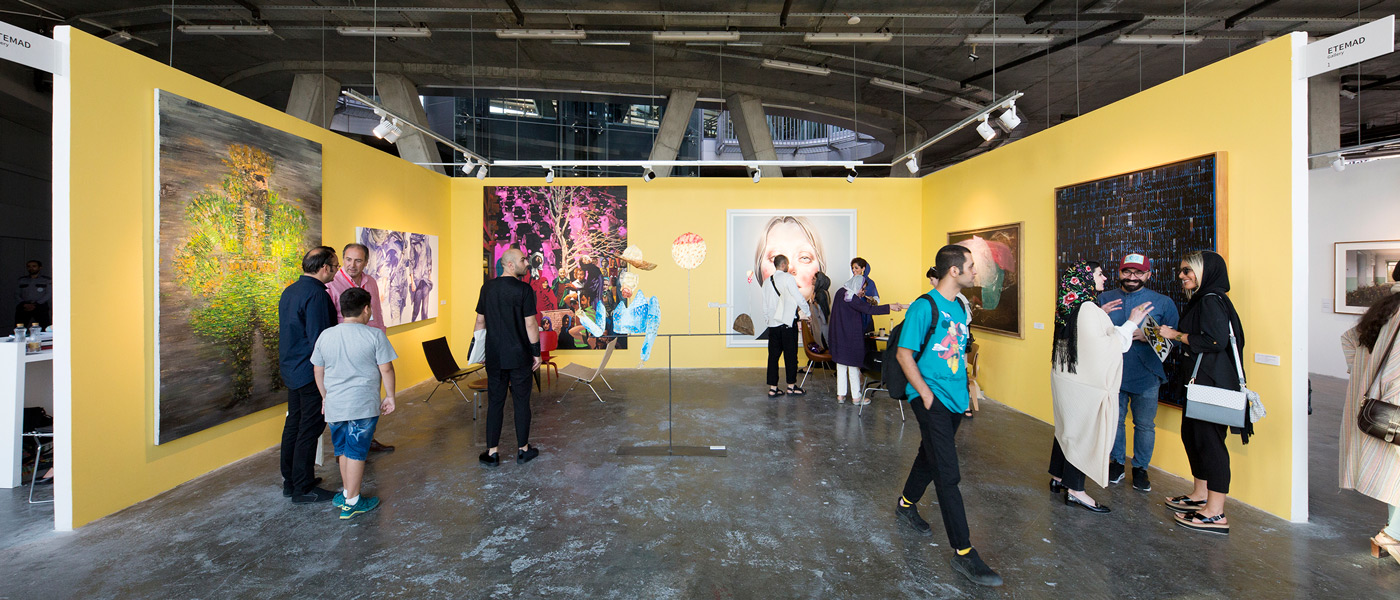
Perhaps most disturbing is how little the article references Iran’s current political context. Since Donald Trump unilaterally withdrew from the Nuclear Deal in May 2018 and re-instituted severe sanctions on Iran, the currency has collapsed – losing 80% of its value in one week – shortages of medicine are affecting hospitals and pharmacies, and many basic goods are increasingly difficult to find. The Iranian people are the greatest victim in all of this. After years of economic growth, Iran’s economy is contracting, and thousands of the country’s best and brightest are fleeing in droves. This is not the first time international sanctions on Iran have crippled the economy: in 2010/11, when Obama imposed these same sanctions, there were similar deadly consequences. If there is a reason why Tehran is on the brink, it is because of international sanctions and pressure that are – if you take US Secretary of State at his word – designed to starve Iranians.
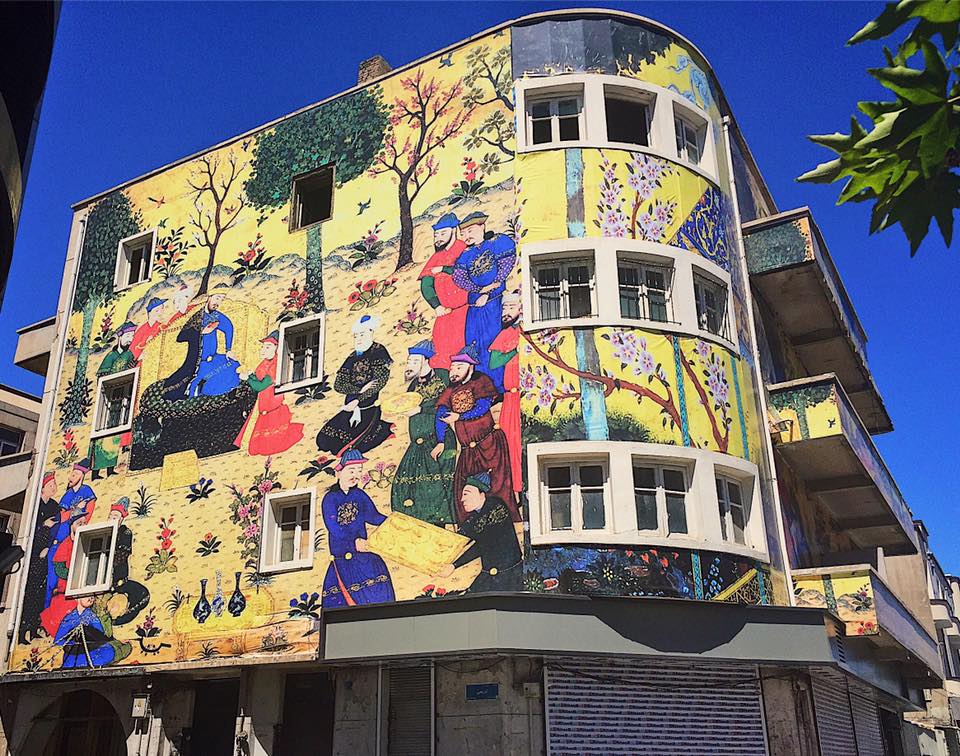
Against “Third World” cliches
Ignoring Tehran’s remarkable urban transformation over the last three decades leaves us with a simplistic, reductionist vision of this Middle Eastern metropolis. In the article, Tehran is a Third World cliche, yet again: traffic, minarets, and morality police, a disaster always waiting to happen. It’s not that the points raised are untrue, or that Tehran doesn’t have problems. It does. But by ignoring the hard work being done by Iranians committed to improving their city, striving to build a better capital, and succeeding in many beautiful and unexpected ways, we are given a stereotype, a basketcase mired in problems and mullahs that hardly resembles the complex and resilient city that Tehran really is.
This stereotype does not help us understand Tehran better, nor does it allow us to learn about the resilience of Tehran’s people in difficult circumstances; it merely reinforces the cliche that Middle Eastern metropolises are just disasters waiting to happen, that the world beyond the West is a mess of its own making. And not only is this lazy journalism; it’s simply untrue. Tehran’s problems are the same problems faced by cities around the world; by listening and learning from Tehran’s solutions, perhaps we could work to better solve our own.











8 comments
I agree with Alex as the Western print and electronic emedia are always negative about anything coming from Iran .
Iran is a beautiful and great country,I like write more about Iran and more people come to Iran and search about Iran and Iranian,Introduce Iran and the Iranian people to the world
Visit all parts of Iran
And tell the truth about Iran
Iran really is a good and beautiful country .
Very interesting. It pinpoints the problem with many mega analyses of many counties. They ignore grassroots activism, small business development, etc. So, the negative picture is not so much wrong, as incomplete.
The Guardian is one of the most analytical and progressive English-language papers in print. They published a widely read article by Kwame Anthony Appiah titled “There is no such thing as western civilisation” which I read and shared with great interest. Their coverage of U.S. politics and culture, for a British paper, is exceptionally in-depth and nuanced.
Sadly, like most other European and American papers, they strike a far less critical tone when covering Iran and fall into cliches that Alex has so clearly analyzed here. As an avid reader of the Guardian, I sincerely hope they can come to realize and address this shortcoming by turning to more writers familiar with Iran. At the moment, it seems like the responsibility of covering Iranian society solely falls on the shoulders of Saeed Kamali Dehghan.
Great article, on spot and precise against another piece of garbage writing against Iran for the sake of the pleasing the special interest in the West. Thank you Alex.
Excellent, indeed most western coverage seem to suffer from selective blindness towards progressive actions taken regarding urbanization in the East in general (I live in India and same story-line applies when western journalist write about Indian cities)….
Would it be possible to obtain the details of the places where the pictures of this article were taken ? Especially the hiking-path café and the 19th century art mansion gallery/café ? (for my next trip). Thank you